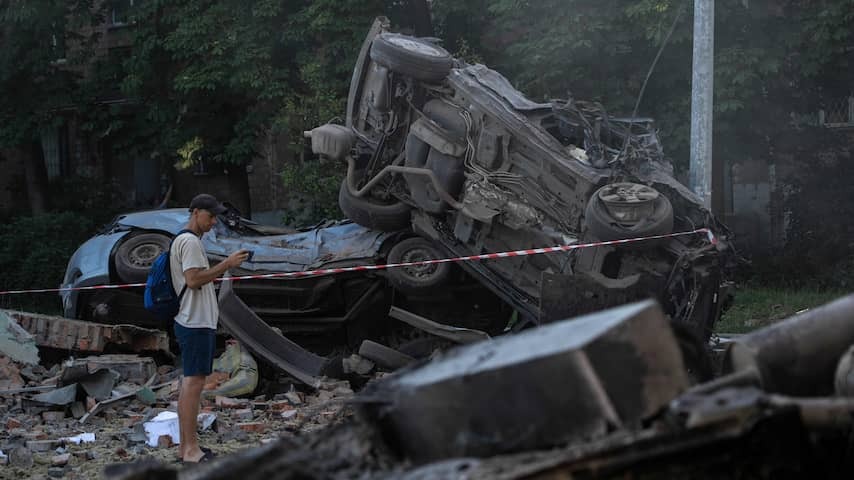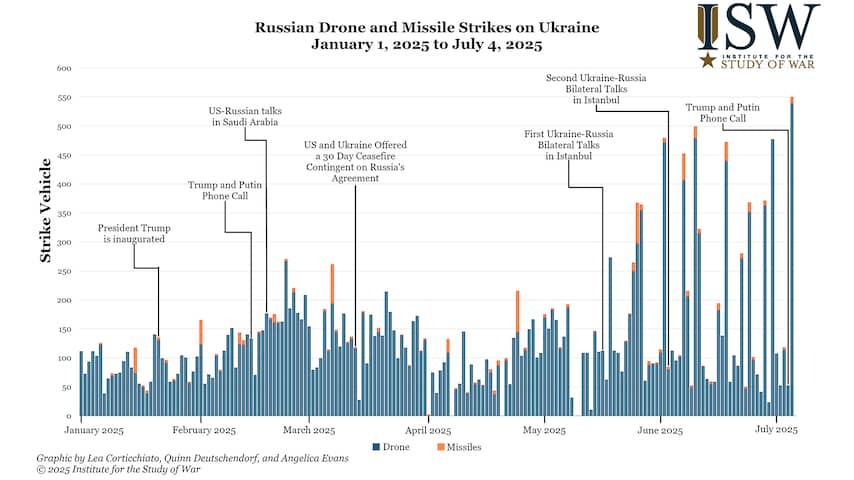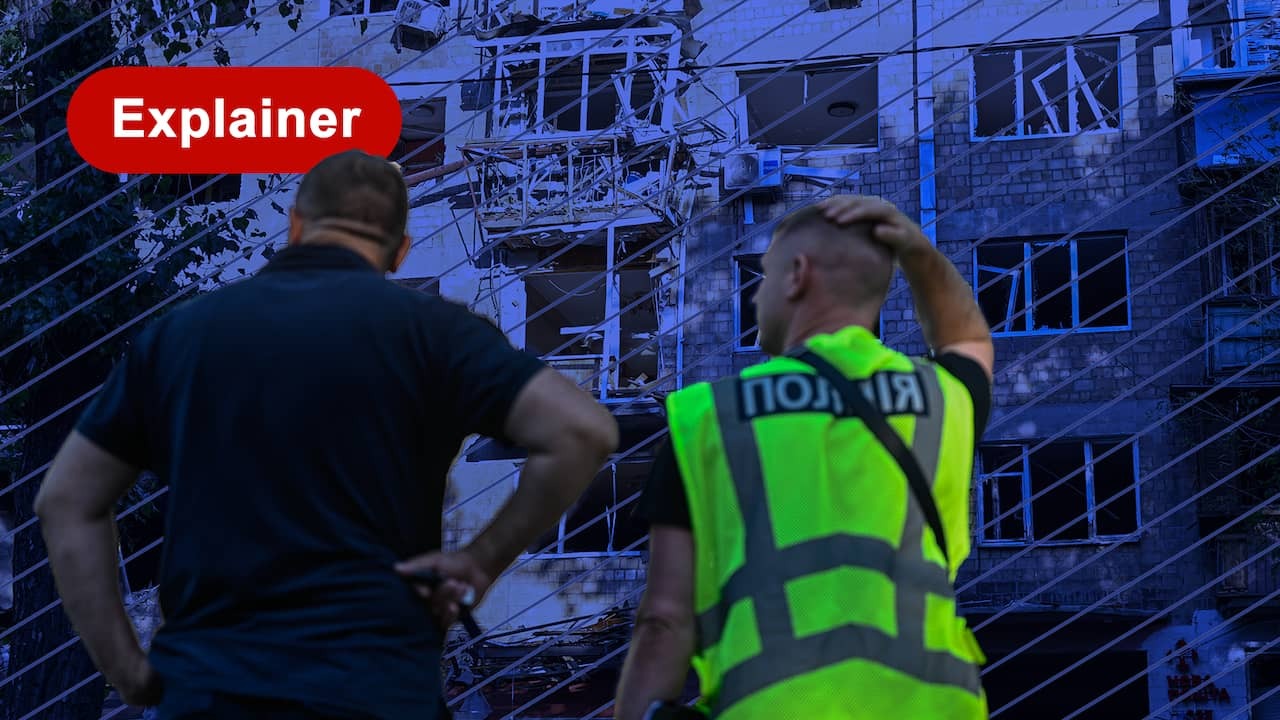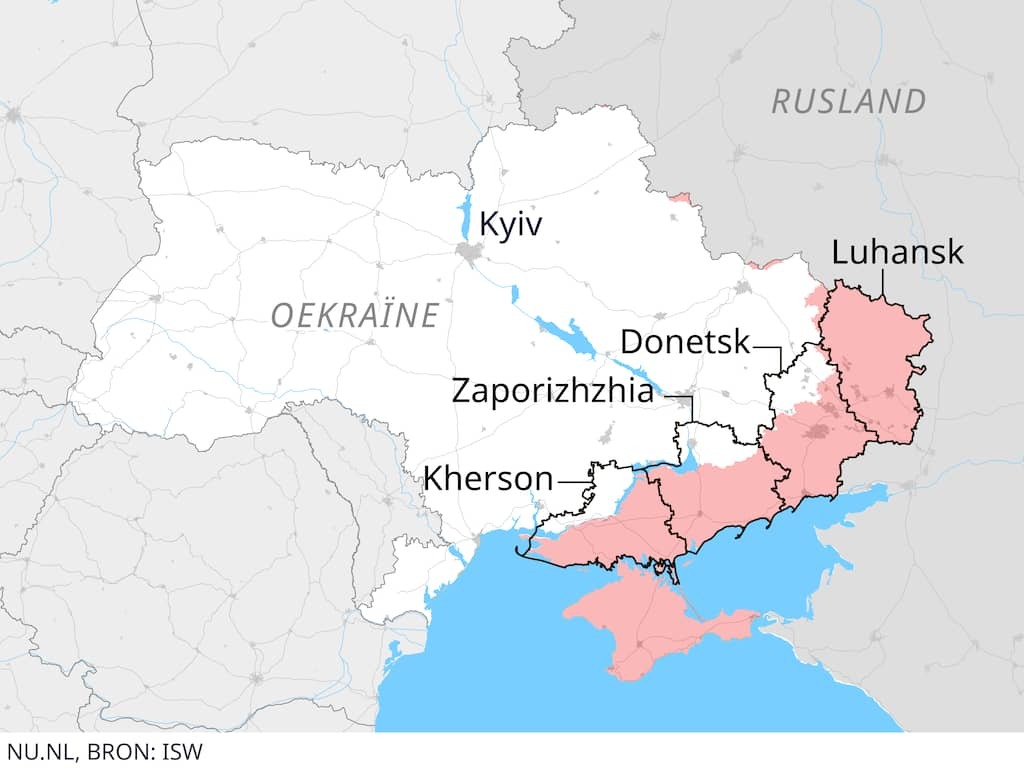
The number of Russian drone attacks in Ukraine is increasing. Both the number of attacks and the number of drones used are rising, experts tell NU.nl. But that doesn’t mean things are going well for the Russians at the front.
Since January, experts have seen an increase in the number of Russian drone attacks in Ukraine. More drones are also being deployed per attack. For example, according to the Ukrainian air force, Russia fired 728 drones and 13 missiles at Kyiv on the night of Tuesday to Wednesday. A record number, according to Ukraine. There are several reasons for this increase.
Military specialist Patrick Bolder and defense expert Peter Wijninga from The Hague Centre for Strategic Studies (HSCC) see a link with the arrival of American president Donald Trump in the White House.
“You could say that the pressure that Russia is exerting on Ukraine with drone attacks – and also with ballistic missiles and cruise missiles – has been increasing enormously since Trump took office,” says Wijninga.
According to the experts, Russia has also adjusted its tactics on drones. “Which increases the effectiveness of those attacks,” says Bolder. For example, Russia deliberately fires a lot of drones at the same time to keep the Ukrainian air defenses busy. In addition, the country fires a number of ballistic missiles and cruise missiles.
“The Ukrainians can only detect and intercept a certain number of targets at the same time,” Wijninga emphasizes. “That means that there is a greater chance that those cruise missiles and ballistic missiles will get through.” According to him, this ensures that the attacks cause more damage and more casualties.
The graph below from the Institute for the Study of War (ISW) shows that in the last two months Russia has used many more drones in one go in a number of attacks.

Russia is becoming less dependent on drones from Iran
A year ago, the ratios between those weapons were very different, says Wijninga. At that time, Russia used about the same number of drones as cruise missiles and ballistic missiles. “They have discovered that drones are much cheaper to produce.”
He notes that the Russians are able to produce many more drones. “In the month of May, their drone production increased by 17 percent.” The video below explains how Russia manages to do that.
By producing its own drones, Russia is becoming less dependent on drones from Iran. The drones that the country makes itself are also more resistant to Ukrainian defense.
 2:34
2:34
Russia breaks record after record with drone attacks: this is how
Ukraine is also focusing on drones
“Tens of thousands of drones are being deployed on both sides,” says Wijninga. So Ukraine is also focusing on drones. “Ukraine has made most of the drones it uses itself.”
At the front line, the countries use drones in a similar way, Bolder sees. They use drones to gain an overview, carry out attacks and communicate. “Now you also have drones that shoot other drones out of the sky.”
Ukraine does not carry out such massive attacks as Russia carries out on Ukrainian cities. “Ukraine cannot afford that,” says Wijninga. “And Ukraine also does not want to come across to the West as a club that attacks the population.”
Instead, Ukraine mainly directs its drones at military and industrial targets in Russia, such as weapons factories, weapons storage sites and airfields. “Try not to hit the arrows, but the archer,” Bolder describes that tactic. Ukraine wants to prevent Russia from producing more drones, because it is impossible to intercept all Russian drones in the air. “You see that Ukraine is increasingly able to tackle the Russian defense industry in Russia.”
Dependent on US for air defense
Ukraine can make drones itself. But for air defense, the country is mainly dependent on American weapons, such as the Patriot missiles that a Ukrainian journalist asked Trump for during the NATO summit in The Hague. The video below shows that the American president reacts cautiously to this.
Last week, NBC News reported, based on anonymous sources, that Defense Secretary Pete Hegseth had blocked the delivery of Patriots – and other weapons. But on Monday evening, Trump announced that the United States will send more weapons to Ukraine. “We have to send them new weapons. They have to be able to defend themselves,” Trump said.
The US Department of Defense confirms the extra arms deliveries. The American medium Axios reports, based on anonymous sources, that this includes ten Patriot missiles, but those numbers have not (yet) been confirmed. If there are ten, that is less than the US had previously promised, Axios writes.
“If those kinds of resources run out, these kinds of attacks will also become more lucrative for Russia to do,” says Nicolaas Kraft van Ermel about the Russian drone attacks. He is a lecturer in contemporary history and a staff member of the Groningen Institute for Central and East European Studies.
“That can certainly have an impact on the front line,” thinks Kraft van Ermel. “Ukraine has to choose where it is going to deploy the limited resources.” There may come a time when Ukraine has to choose between protecting civilians in the cities and the military and equipment at the front, he says.
Trump is considering Patriot missiles for Ukraine
Few changes at the front
Wijninga does not see the link between the front line and the Russian drone attacks in that way. “This is purely intended to put pressure on the Ukrainian population,” he says about the air strikes. “That actually has no influence on the front.”
The three experts see little movement on the front at the moment. “It is mainly a static war,” says Bolder. But at a local level, Russia is moving forward “meter by meter,” Kraft van Ermel adds. For example, there is movement in the Sumy region. In addition, Russia seems to be preparing for a new attack on Pokrovsk. “They have been trying to conquer that for months, but they keep failing,” says Wijninga.
If Russia continues at this rate, Wijninga says it will take four years before it really has Donetsk, Luhansk, Zaporizhzhia and Kherson in its hands. These are the four provinces – or oblasts – that Russia at least sees as Russian.
“Putin does have the idea that he can win,” says Wijninga. Therefore, he has no reason to stop. And Ukraine “is fighting to survive,” Bolder adds. “As long as both countries have enough money, resources and motivation, it will continue.”
